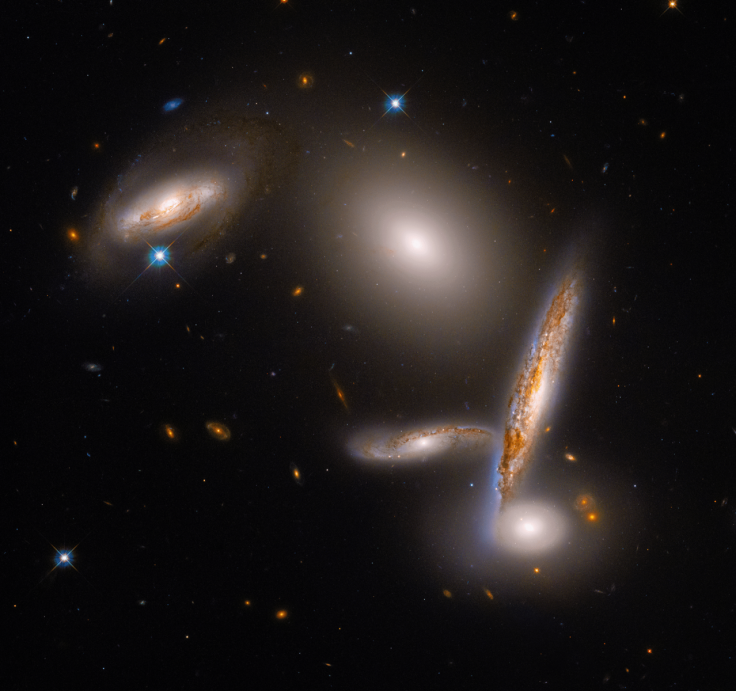
The Hubble Space Telescope (HST) is about to have its 32nd birthday, according to the National Aeronautics and Space Administration's (NASA) Hubble Site. In celebration of this milestone, NASA scientists took a photo of one of the most unusual densely packed galaxy groups.
NASA recently took a photo of the Hickson Compact Group 40, one of the unusually closely-knit collections of galaxies in the universe, using the HST to celebrate its upcoming 32nd birthday, per Space.com.
The Hickson Compact Group 40 is one of more than 100 similar compact galaxy groups.
Hickson Compact Group 40 Details
The Hickson Compact Group 40, or HCG 40, is one of the most unusual densely packed galaxy groups in the solar system. This compact galaxy group, which is located in the direction of the constellation Hydra, is made up of five galaxies: three spiral-shaped galaxies, an elliptical galaxy, and a lenticular (lens-like) galaxy.
NASA scientists expect that these galaxies will collide and merge together in about one billion years to form a giant elliptical galaxy. But until then, they drift closer and closer to each other thanks to a "leisurely gravitational dance."
Read More : North Korea's Lazarus Hacking Group is Targeting Cryptocurrency, Blockchain Industries Using Crypto Apps
Scientists thoerized that HCG 40 came be what it is due to these galaxies crossing paths in their evolution, which eventually led to them creating an "exceptionally crowded and eclectic galaxy sampler." The group is crowded enough that it could fit within a region of space less than twice the diameter of the Milky Way's stellar disk.
One possible explanation as to how these five galaxies (and other similar compact galaxy groups) will eventually end up as one big galaxy is that there's a massive amount of dark matter associated with these galaxies. Once these galaxies "collide" with each other, the dark matter can form a big cloud within which the galaxies are orbiting. As the galaxies crash into the dark matter, they feel an opposing force from its gratitational effects, slowing their motion and makes the galaxies lose their enegy, making them fall together into one big galaxy.
Dark matter is an unknown and invisible form of matter.
Hubble Space Telescope History
The Hubble Space Telescope is the first sophisticated optical observatory placed into orbit around Earth, according to Britannica. US Congress authorized its constrction in 1977 under NASA's supervision and was named after Edwin Hubble, the foremost astronomer of the 20th Century.
NASA launched the space telescope on April 24, 1990 from the space shuttle Discovery and was fully deployed the day after, per a separate Hubble Site page. Its first ever image it took was of the Star Cluster NGC 3532 on May 20, 1990.
HST measures at 43.5 ft in length, and weighted at 24,500 pounds at launch. The space telescope has a primary mirror 94.5 inches in diameter and a secondary mirror with a 12-inch diameter.
The telescope is an aging telescope - a relic of its time. It went offline for a month in the summer of 2021 following an issue with its main payload computer, per a separate Space.com article. It would later encounter a problem on its internal messaging, which sent all five of the observatory's science intruments into a protective "safe mode."
The HST will soon be replaced by the James Webb Spaace Telescope as NASA's flagship space telescope in the summer of 2022.









